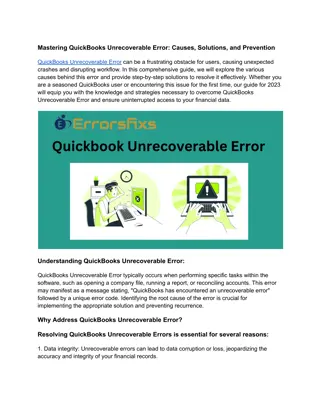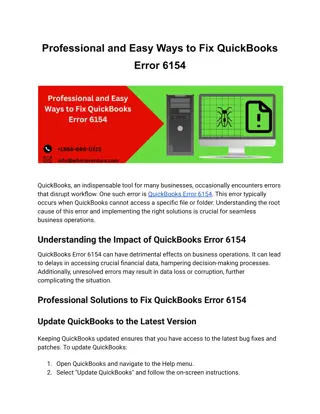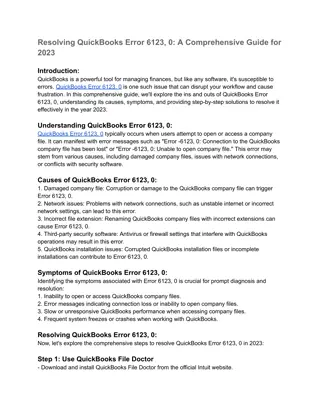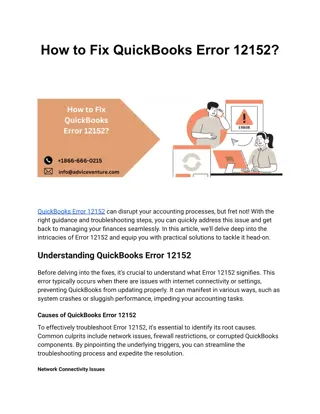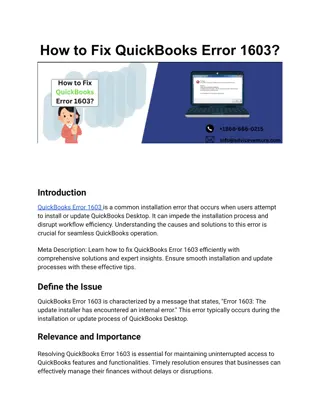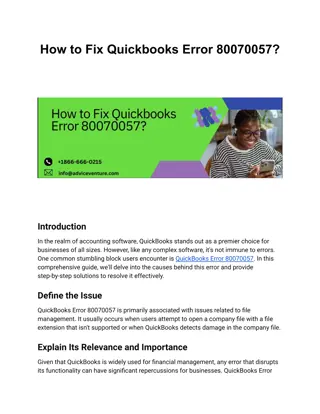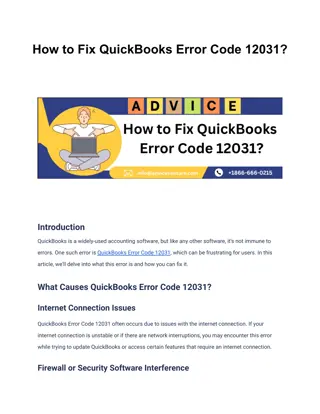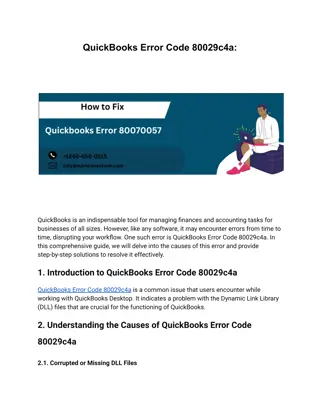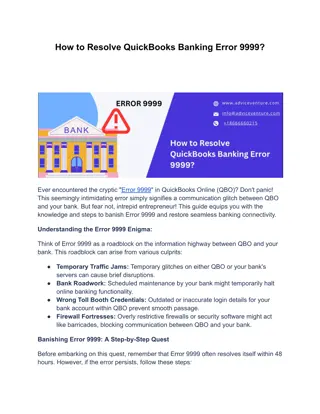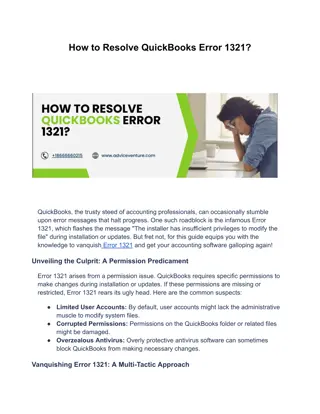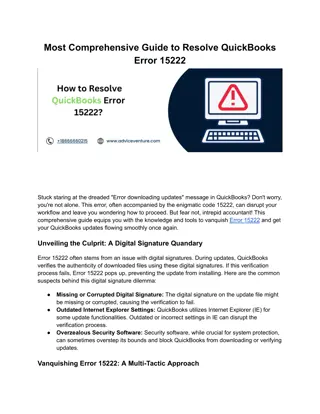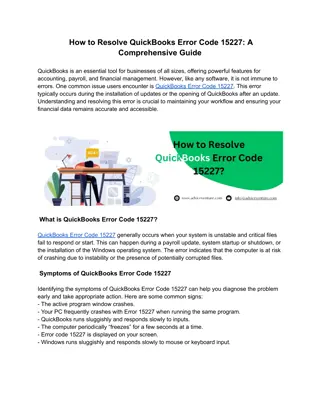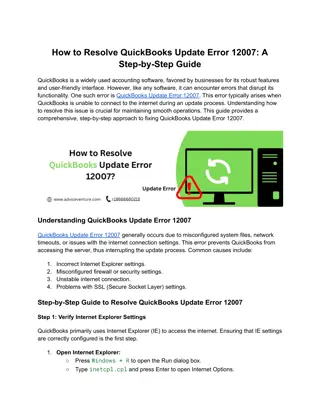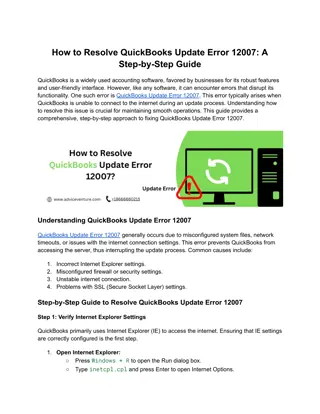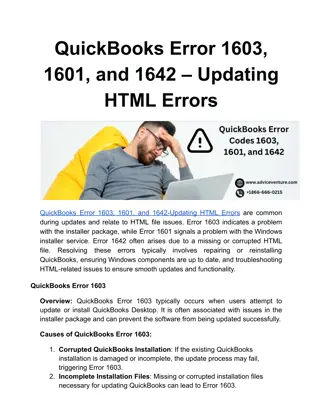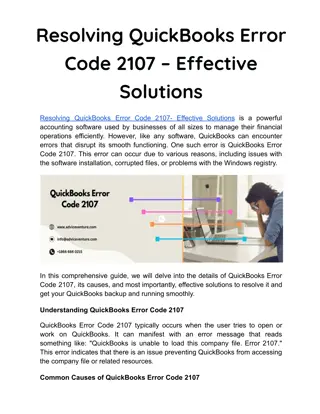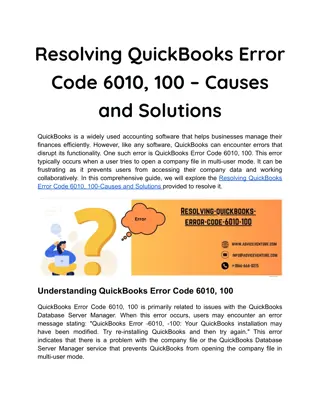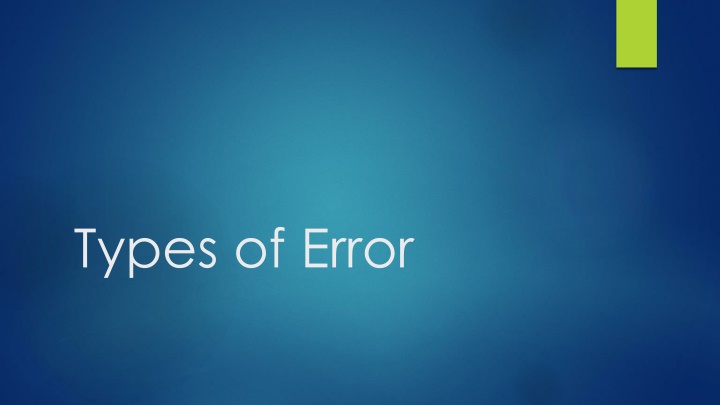
Types of Error
Explore the significance of errors in experimental results and learn about systematic, random, and blunder errors. Discover examples and effects of systematic errors, as well as how random errors can impact measurements.
Download Presentation

Please find below an Image/Link to download the presentation.
The content on the website is provided AS IS for your information and personal use only. It may not be sold, licensed, or shared on other websites without obtaining consent from the author. If you encounter any issues during the download, it is possible that the publisher has removed the file from their server.
You are allowed to download the files provided on this website for personal or commercial use, subject to the condition that they are used lawfully. All files are the property of their respective owners.
The content on the website is provided AS IS for your information and personal use only. It may not be sold, licensed, or shared on other websites without obtaining consent from the author.
E N D
Presentation Transcript
It is impossible to make an exact measurement. Therefore, all experimental results are wrong. Just how wrong they are depends on the kinds of errors that were made in the experiment. Be careful! Wrong doesn't mean bad! The word "wrong" to emphasize a point. All experimental data is imperfect. Scientists know that their results always contain errors. However, one of their goals is to minimize errors, and to be aware of what the errors may be. Since they know that all results contain errors, scientists almost never give definite answers. They are far more likely to say: "it is likely that ..." or "it is probable that ..." than to give an exact answer. As a science student you too must be careful to learn how good your results are, and to report them in a way that indicates your confidence in your answers.
Error 3 types of error 1. Systematic errors 2. Random errors 3. Blunders Error the mistakes you make during an experiment
Systematic Errors Errors caused by experiments procedure. These are errors caused by the way in which the experiment was conducted. In other words, they are caused by the design of the system. Poor procedure, or poor execution leads to more errors. Example: Construction of helicopters Storage of helicopters Dropping method for helicopters A system of starting and stopping the timer
Examples 1. Instrumental. For example, a poorly calibrated instrument such as a thermometer that reads 102 oC when immersed in boiling water and 2 oC when immersed in ice water at atmospheric pressure. Such a thermometer would result in measured values that are consistently too high. 2. Observational. For example, parallax in reading a meter scale. 3. Environmental. For example, an electrical power brown out that causes measured currents to be consistently too low. 4. Theoretical. Due to simplification of the model system or approximations in the equations describing it. For example, if your theory says that the temperature of the surrounding will not affect the readings taken when it actually does, then this factor will introduce a source of error.
Effects of Systematic Error Major systematic errors ruin experiments Systematic errors can not be eliminated by averaging. In principle, they can always be eliminated by changing the way in which the experiment was done. In actual fact though, you may not even know that the error exists.
Random Error These errors are unpredictable. They are chance variations in the measurements over which you as experimenter have little or no control. There is just as great a chance that the measurement is too big as that it is too small. Since the errors are equally likely to be high as low, averaging a sufficiently large number of results will, in principle, reduce their effect. Example: if timing was done correctly, stopping the timer. Some times you will stop it too early, some times you will stop it a little late. Large sample size and averaging usually fixes random errors.
Blunders A final source of error, called a blunder, is an outright mistake. A person may record a wrong value, misread a scale, forget a digit when reading a scale or recording a measurement, or make a similar blunder. These blunder should stick out like sore thumbs if we make multiple measurements or if one person checks the work of another. Blunders should not be included in the analysis of data.
Other ways to check the validity of my experiment: Precision and accuracy Accuracy does my experiment data show what theoretical work has come up with? Did I get what the other smart scientists got? Precision am I getting the same answer after doing it a bunch of times?
Accuracy vs. precision Accuracy - how close a result comes to the true value Precision the closeness of two or more measurements to each other.


